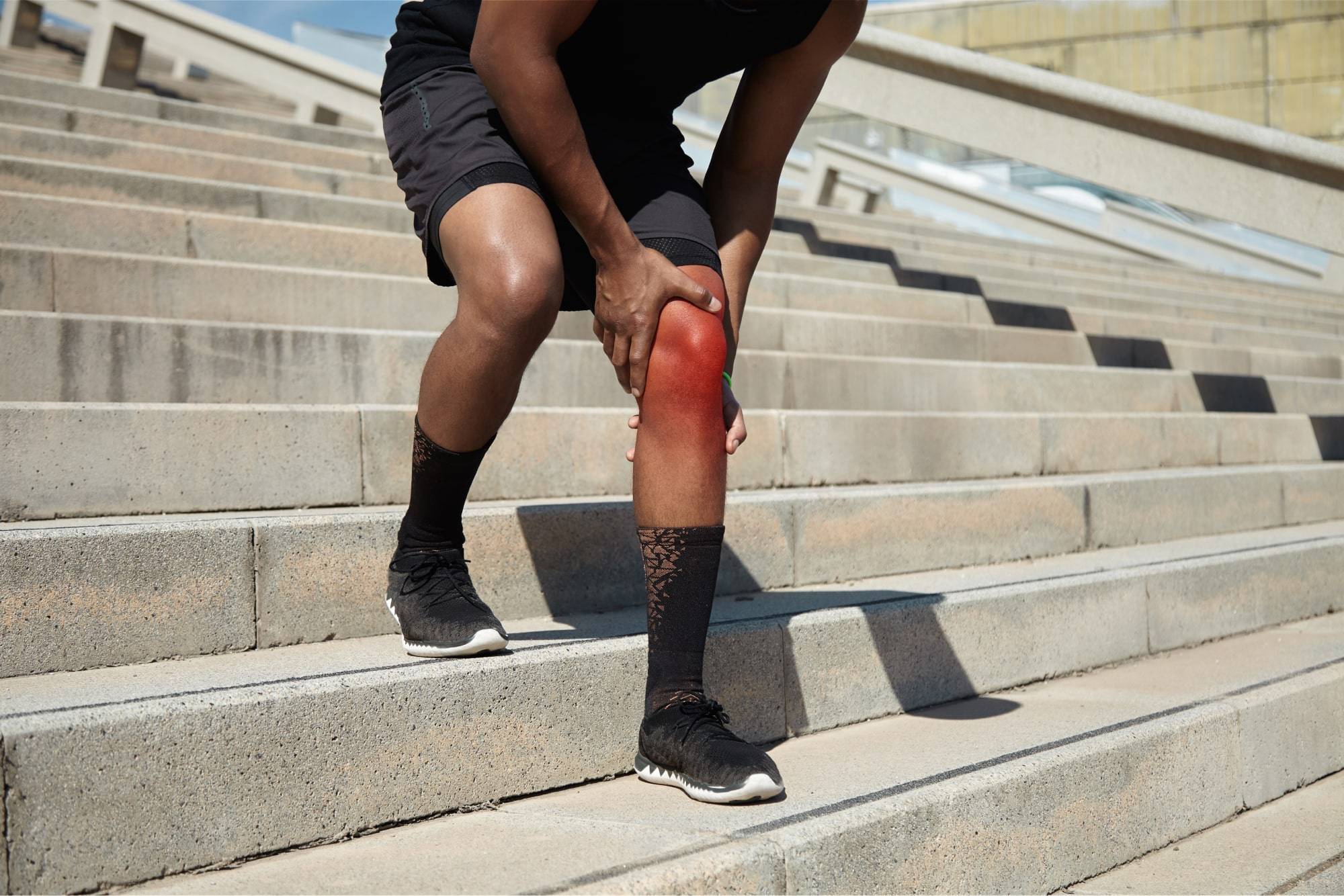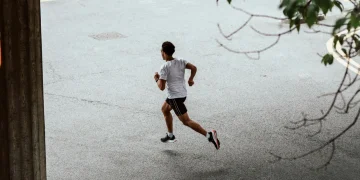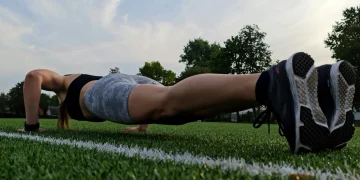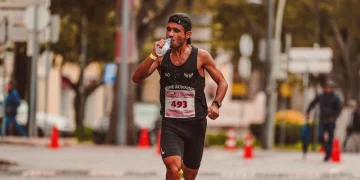If running is your life, even rain and icy wind will not stop you from giving it your all! But what if there is suddenly running knee pain? It’s important to listen to your body. In the following blog post, you’ll find answers to how to handle knee pain when running, including causes, treatment, and prevention.
Common Knee Injuries from Running
Pain can occur if you suddenly start intense training after a long break. Severe pain in the knee joints regularly occurs during sports. According to Vishal Saxena, MD, there are common knee injuries from running:
Runner’s knee
The underlying factor in the development of this pain syndrome (runner’s knee) is lateral displacement relative to the groove of the femur. As a result, during flexion and extension of the knee, its trajectory of movement is disturbed. This leads to overstretching of the ligamentous structures supporting the patella, increased pressure on the articular surfaces, loss of cartilage elasticity, and pain.
Tendinitis
Knee pain while running can also be caused by inflammation of the patellar ligament (tendinitis). This disease is called “jumper’s knee.” During jumping, a sharp tension in the muscle of the anterior surface of the thigh leads to micro-tears and damage to the patellar ligament. Most of the pain is localized under the kneecap. The pain occurs while running, jumping, climbing stairs, and squats.
Bursitis
The knee has articular bags or burses (fluid-filled sacs forming gaskets between moving parts) to reduce friction. Due to excessive load, the bursae can become inflamed – bursitis develops, another cause of knee joint pain while running.
Pain under the knee
Sudden sharp pain under the knee occurs when the hamstring is damaged. Such injuries are common in tennis, football, basketball, and running. Any pulling pain under the knee when bending is a reason to see a doctor since the spectrum of diseases with this symptom is wide and difficult to understand on your own.
“In order to improve your performance and overcome your limits, you need a regular training plan with varying intensities. Never forget that recovery is just as important as the workout itself. It is through the recovery process that you become a better person. In this way, you will return strength to the muscles and prevent injuries.” Anna and Lisa Haner, German track athletes, marathon participants
Knee Pain from Running: Treatment
Where running causes pain in the knee joints, the first step is to reconsider the training regimen: temporarily reduce the load, avoid movements that cause pain, and include exercises to strengthen and stretch the muscles.
In some cases, such as osteoarthritis, it is desirable to switch to less traumatic types of exercise (walking, swimming, cycling, elliptical trainers) and be sure to normalize body weight. If necessary, medicine such as paracetamol and a non-steroidal anti-inflammatory (ibuprofen, diclofenac, and others) can be used. During training, you can use dynamic orthoses (knee pads).
“On average, it takes four to six weeks to recover from the runner’s knee. You can speed up the recovery process by reducing the load on the affected knee and building strength with rehab exercises,” says Pierre Schydlowsky, Specialist MD in rheumatology
Intense, sudden pain in the knee joint, appearing at the peak of the load, is most likely associated with an acute injury. These can be sprains and ruptures of the muscles of the anterior and posterior surfaces of the thigh, ruptures of the menisci (cartilage-shock absorbers located inside the knee joints), and ruptures of the ligaments of the knee joint.
All these conditions are characterized by acute pain and limited mobility in the knee during a fall, impact, unsuccessful landing after a jump, intense acceleration, and sharp twisting in the knee joint.
What can you do in such a situation before seeking medical help? First, limit movement and rest the injured joint. Second, apply ice or special cooling packs to the painful area. If neither is at hand, then bags of frozen vegetables or a frozen towel can be a good alternative. If the knee is swollen, it should be in an elevated position. Finally, take paracetamol or a non-steroidal anti-inflammatory drug.
When running, remember that any joint pain occurring during exercise requires attention, careful evaluation, and correction. Treat your knees carefully, and running will bring you benefit and pleasure.
Why does My Knee Hurt when I Run?
In addition to sports injuries, knee pain can be caused by a variety of factors. Some of them you can influence on your own; with others, you will need the help of a specialist.
Among the main reasons are:
- Shoes. Longtime runners know how crucial good running shoes are. If they don’t fit, knee problems will become inevitable. Even if you have found your favorite shoe model, there is nothing wrong with having an orthopedist check to see if it fits you. In addition, it is necessary to monitor the “mileage” of shoes. Running style, shoe design, and terrain are just some factors that affect shoe durability. Remember to monitor the performance of your shoes regularly.
- Workout. It is absolutely normal to strive for a new personal best time. But be careful! If you demand too much from your body, it will be unable to keep up at some point. You can prevent fatigue by changing your workout plan to suit your fitness level. Increase the difficulty of your workouts gradually. For healthy athletes, increasing the number of workouts by ten percent each week is the golden rule. Most importantly, listen to your body and take warning signs seriously! Your muscles, tendons, and ligaments will thank you.
- Body type. Short, tight muscles outside the thigh or weak stabilizing muscles can lead to knee pain and ruin your running experience. Different leg lengths and O-shaped or X-shaped curvatures can also cause knee problems while running. Have an orthopedist check your feet and legs. Misalignments can be effectively countered with orthopedic insoles.
- When you run downhill, the load increases significantly more than on a flat surface. The side slope is also bad for the joints. If you have knee problems, you should avoid slopes. If part of your route goes downhill, it is better if you change from running to walking – this will reduce the load on your knees.
What Muscles to Train to Prevent Knee Pain while Running?
The most important muscle groups are the gluteus maximus, gluteus medius, and quadriceps. These muscles need to be strengthened. Some muscles such as the quadriceps and calf muscles also need to be stretched. A short calf muscle has a powerful effect on knee pain.
Among other preventive measures for knee pain are hitches and warm-ups. It is helpful to use a foam roller. It is always important not to overload, follow the coach’s plan, and listen to your body. If you feel the tissues are not withstanding, you need to be able to stop in time. Run in good, proper shoes and change them regularly.






